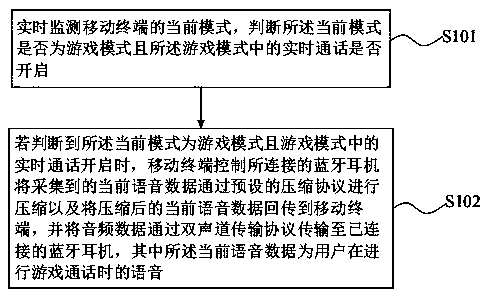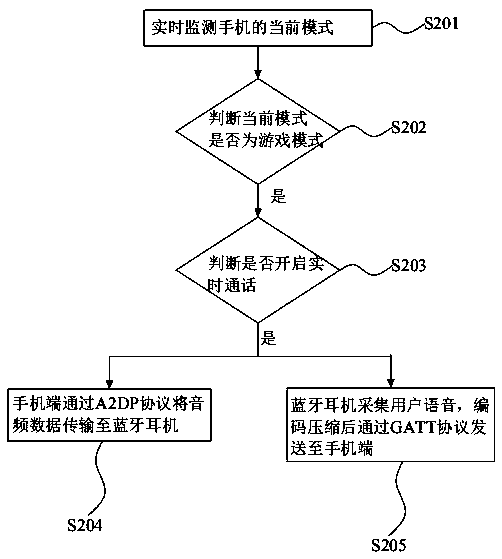Voice data transmission control method, device and system and readable storage medium
A technology for audio data and transmission control, which is applied in speech analysis, speech recognition, short-distance communication services, etc., and can solve problems such as poor sound quality, confusion, and reduced sound quality
- Summary
- Abstract
- Description
- Claims
- Application Information
AI Technical Summary
Problems solved by technology
Method used
Image
Examples
Embodiment Construction
[0044] In order to make the above objects, features and advantages of the present invention more comprehensible, specific implementations of the present invention will be described in detail below in conjunction with the accompanying drawings. Several embodiments of the invention are shown in the drawings. However, the present invention can be embodied in many different forms and is not limited to the embodiments described herein. Rather, these embodiments are provided so that the disclosure of the present invention will be thorough and complete.
[0045] When the user is playing a game and using a Bluetooth headset, if a real-time call is started with a teammate, the android system will automatically switch to monophonic HFP for voice data transmission. The real-time call sound and game background music are both transmitted through the HFP protocol, and the two are mixed in At the same time, the sound quality is greatly reduced, which affects the user experience.
[0046] I...
PUM
 Login to View More
Login to View More Abstract
Description
Claims
Application Information
 Login to View More
Login to View More - R&D
- Intellectual Property
- Life Sciences
- Materials
- Tech Scout
- Unparalleled Data Quality
- Higher Quality Content
- 60% Fewer Hallucinations
Browse by: Latest US Patents, China's latest patents, Technical Efficacy Thesaurus, Application Domain, Technology Topic, Popular Technical Reports.
© 2025 PatSnap. All rights reserved.Legal|Privacy policy|Modern Slavery Act Transparency Statement|Sitemap|About US| Contact US: help@patsnap.com



